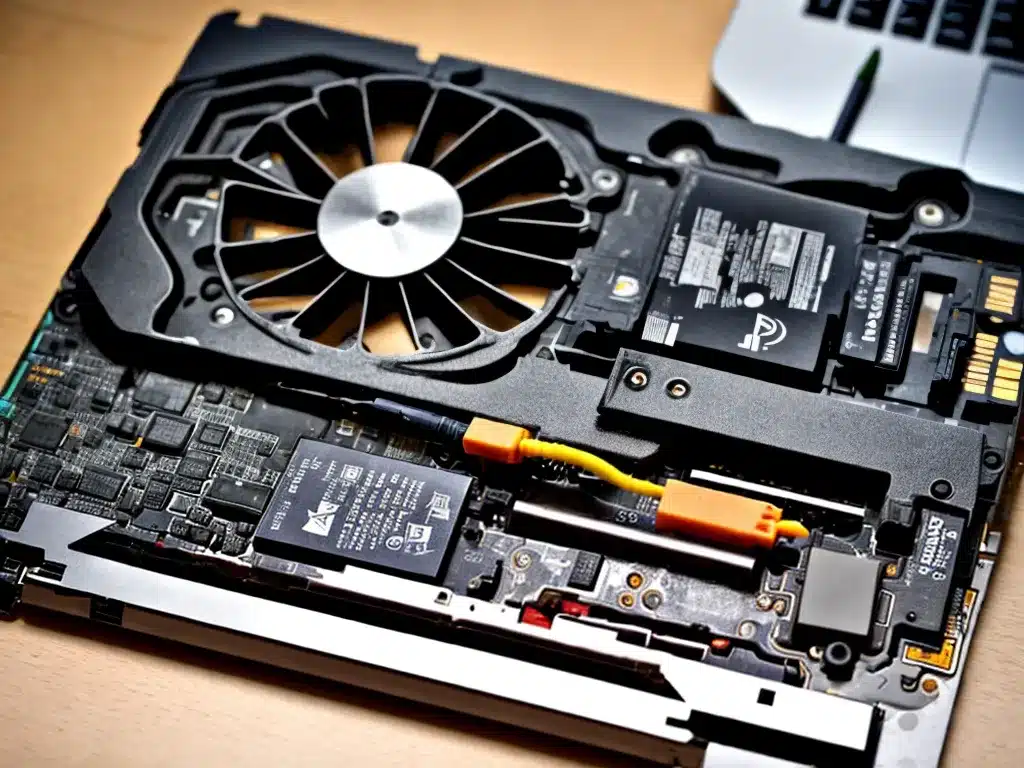
Why Replace a Faulty Laptop Battery
As a laptop owner, having a faulty battery can be extremely inconvenient. When your laptop battery no longer holds a charge or dies quickly, it hinders your ability to use your laptop away from a power outlet. Replacing a worn-out laptop battery is often simpler than you may think and can restore the portability and convenience of having a laptop.
There are several good reasons to replace a faulty laptop battery:
-
It allows you to use your laptop anywhere again, not just near power outlets. This restores the main benefit of having a portable laptop.
-
A new battery will hold its charge for several hours, giving you significantly more usage time off the charger.
-
Replacing an old battery can revitalize an aging laptop, extending its useful life by a couple more years.
-
Newer replacement batteries often have increased capacity compared to the original battery that came with your laptop. This gives you even more usage time between charges.
-
Faulty batteries that won’t hold a charge can eventually expand or bulge, damaging the laptop chassis. Replacing it prevents damage.
-
Laptop batteries gradually lose capacity as they age. A replacement battery will restore your laptop to its original battery life.
How to Choose the Right Replacement Laptop Battery
Choosing the correct replacement laptop battery for your specific laptop model is key for proper functioning. Here are some tips on selecting the right battery:
-
Check the label on the bottom of your laptop or in your user manual to find details about the original battery, including voltage, watt hours, and any part numbers.
-
Search online for a replacement battery using your laptop make and model number. Only consider batteries specifically designed for your model.
-
Carefully check battery specs like voltage, connector type, dimensions, and watt hours to match the original. This data should be in the product details.
-
Shop from reputable retailers and battery brands to ensure higher quality replacements that work as expected.
-
Consider a battery with equal or higher capacity (watt hours) than the original for longer run time. Just ensure voltage matches.
-
For very old laptops, search for batteries described as “high-performance replacement” which exceed the capacities of the originals.
-
Avoid no-name generic batteries which often don’t live up to their claimed capacities. Stick with recognizable battery brands.
What You’ll Need for the Battery Replacement
Replacing a laptop battery requires a few key tools and safety supplies:
-
New replacement laptop battery that matches your make and model
-
Small Phillips head screwdriver
-
Anti-static wrist strap to prevent static discharge damage
-
Soft towel or mat to place laptop on while working on it
Optional supplies:
-
Disposable gloves to keep hands clean
-
Plastic spudger for prying apart plastic clips
-
Magnetic parts tray for screws and small parts
-
Headlamp for illuminating small spaces while working
-
Laptop service manual if available
Step-by-Step Guide to Replacing a Laptop Battery
Follow these steps to safely install your new replacement laptop battery:
1. Discharge and Remove the Old Battery
Fully drain any remaining charge in the old battery. Then turn off and unplug the laptop. Refer to your laptop manual if available for detailed instructions on removing the battery. In general:
-
Locate the battery release latch or slider. Move it to release the battery.
-
Carefully lift the old battery out. Be aware of any cables or connectors running to it.
-
Unplug the battery connector cable from the motherboard.
-
Remove any screws or adhesive strips holding the battery in place.
2. Prepare the New Battery
Before installing the new battery:
-
Inspect it for any signs of damage or leakage. Do not use if the battery is dented, cracked, or leaking.
-
Note the orientation of the battery terminals. These must align properly.
-
Refer to any installation instructions included with the battery.
3. Install the New Battery
To install the new battery:
-
Match the orientation of the new battery to the old one and set it into place. Apply pressure evenly.
-
Reconnect the battery connector cable to the motherboard if required.
-
Replace any screws or adhesive strips to secure the battery. Do not overtighten screws.
-
Slide the battery locking latch back into place. You should hear a click.
-
Place the laptop bottom panel or cover back on and fasten any screws.
-
Reconnect the AC power cord and turn on the laptop. The new battery is now ready to use!
Battery Safety Tips
Working with a laptop battery requires some safety measures:
-
Wear an anti-static wrist strap to prevent static discharge which can damage components.
-
Work in an organized, uncluttered area to avoid dropping small parts.
-
Handle batteries carefully. Do not bend, puncture, or disassemble them.
-
Do not leave replacement batteries exposed to high heat.
-
Dispose of faulty or leaking batteries properly at an e-waste recycling center. Do not throw them out with normal trash.
-
Avoid holding the battery connectors and touching the motherboard simultaneously to prevent static damage.
-
Stop work immediately if the replacement battery appears damaged or is overheating.
Following good battery practices will keep your laptop power system working safely for years to come. With a small amount of care and effort, you can replace a faulty laptop battery yourself, restore mobility to your aging laptop, and save the cost of a professional repair.












